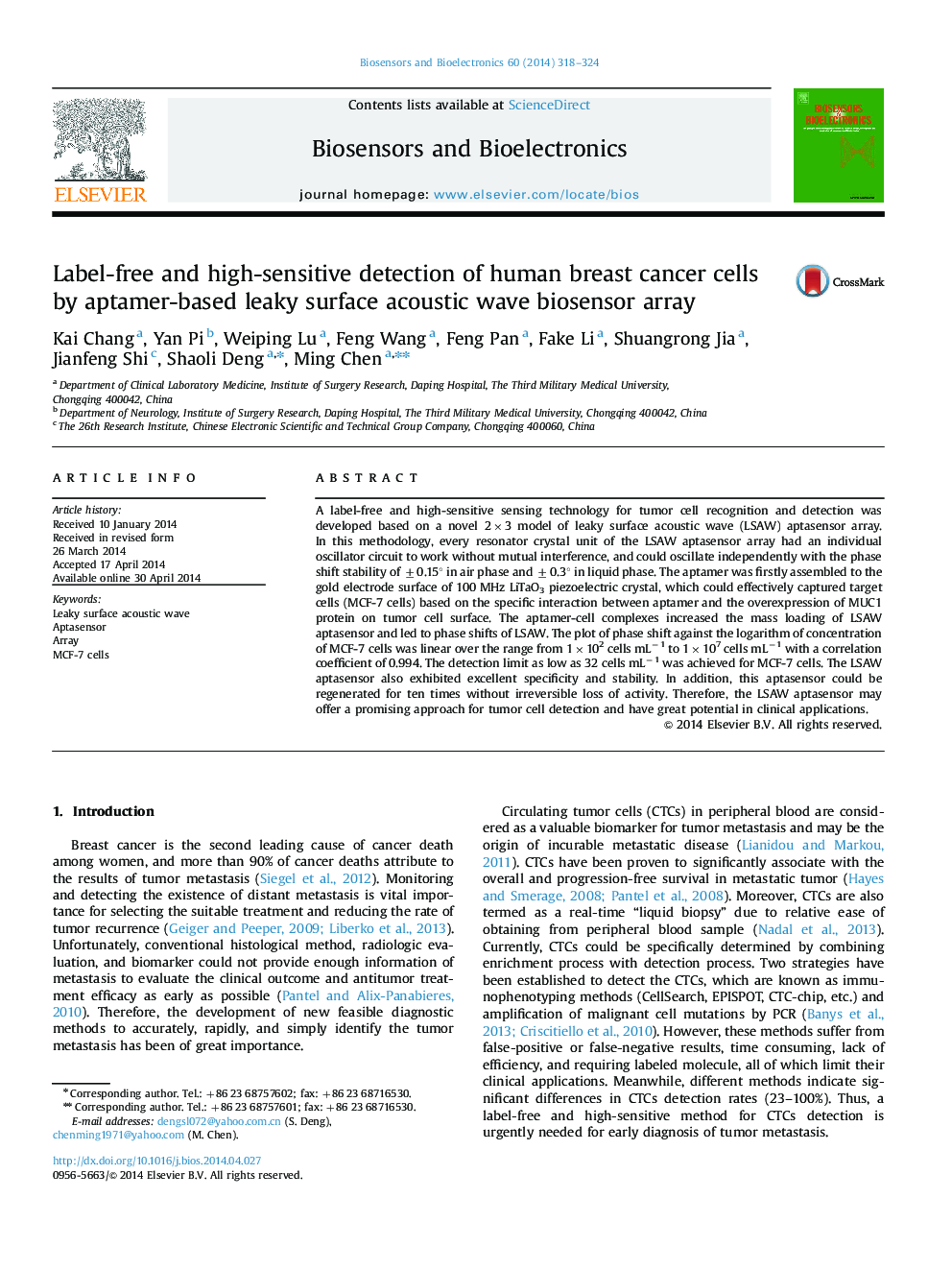| Article ID | Journal | Published Year | Pages | File Type |
|---|---|---|---|---|
| 866451 | Biosensors and Bioelectronics | 2014 | 7 Pages |
•A novel 2×3 model of LSAW aptasensor array for MCF-7 cells detection was constructed.•The phase shift was linear to the logarithm of MCF-7 cells concentration.•The LSAW aptasensor exhibited a feasible regeneration and excellent specificity.
A label-free and high-sensitive sensing technology for tumor cell recognition and detection was developed based on a novel 2×3 model of leaky surface acoustic wave (LSAW) aptasensor array. In this methodology, every resonator crystal unit of the LSAW aptasensor array had an individual oscillator circuit to work without mutual interference, and could oscillate independently with the phase shift stability of ±0.15° in air phase and ±0.3° in liquid phase. The aptamer was firstly assembled to the gold electrode surface of 100 MHz LiTaO3 piezoelectric crystal, which could effectively captured target cells (MCF-7 cells) based on the specific interaction between aptamer and the overexpression of MUC1 protein on tumor cell surface. The aptamer-cell complexes increased the mass loading of LSAW aptasensor and led to phase shifts of LSAW. The plot of phase shift against the logarithm of concentration of MCF-7 cells was linear over the range from 1×102 cells mL−1 to 1×107 cells mL−1 with a correlation coefficient of 0.994. The detection limit as low as 32 cells mL−1 was achieved for MCF-7 cells. The LSAW aptasensor also exhibited excellent specificity and stability. In addition, this aptasensor could be regenerated for ten times without irreversible loss of activity. Therefore, the LSAW aptasensor may offer a promising approach for tumor cell detection and have great potential in clinical applications.
